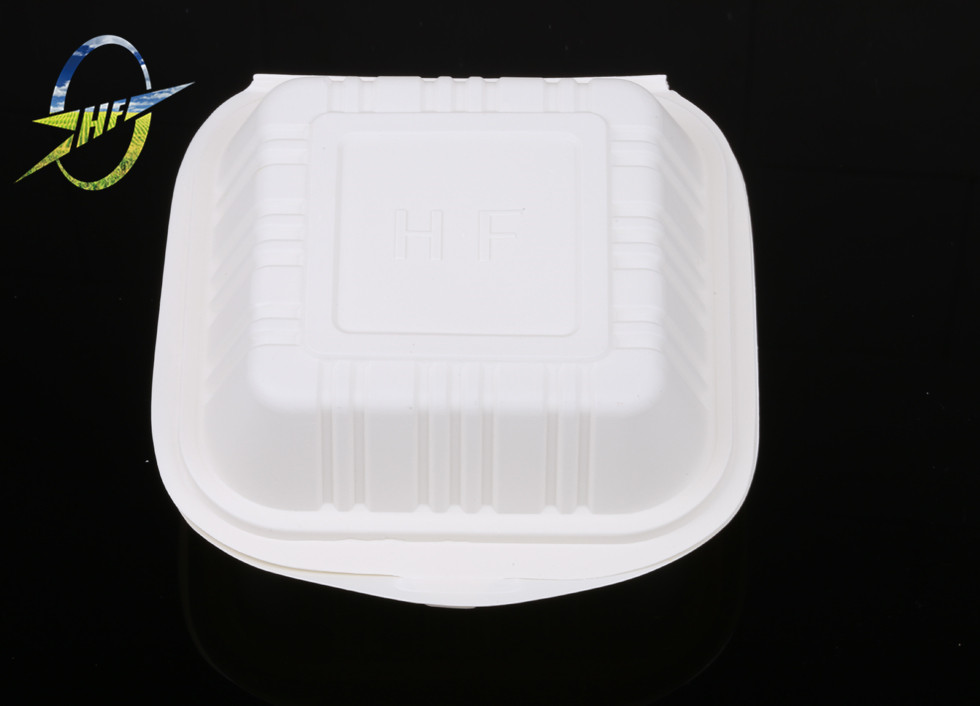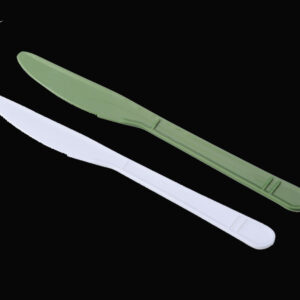Introduction
In recent years, there has been a growing concern about the environmental impact of single-use plastic products, leading to an increasing demand for sustainable alternatives. Cornstarch tableware has become popular due to its biodegradability and renewable nature. However, as the need for Cornstarch cutlery grows, addressing the scalability and resource availability challenges for mass-producing it is crucial. In this blog post, we will explore the various challenges faced in scaling up the production of cornstarch tableware and discuss potential solutions to overcome them.

The Increasing Demand for Cornstarch Tableware
Single-use plastic tableware contributes significantly to environmental pollution, as decomposing takes hundreds of years. Demand for eco-friendly alternatives has increased as consumers become more environmentally aware. Cornstarch tableware, also known as biodegradable or compostable tableware, has gained popularity due to its ability to break down naturally and reduce the burden on landfills.
The production of cornstarch tableware involves using cornstarch as the primary raw material, which is a renewable resource. Cornstarch is extracted from corn grown on farms, making it a more sustainable option than traditional plastic tableware derived from fossil fuels. The production process of Cornstarch cutlery involves molding it into various shapes and sizes, making it suitable for a wide range of applications, including plates, bowls, cups, and cutlery.



Challenges in Scaling Up Production
While the demand for cornstarch tableware is increasing, several challenges in terms of scalability and resource availability need to be addressed. These challenges include:
1. Sourcing an Adequate Supply of Cornstarch
As the demand for Cornstarch cutlery grows, there is a need for a sufficient and consistent supply of cornstarch as the primary raw material. Corn is a widely cultivated crop, but increasing the demand for cornstarch can strain the farming industry. Addressing this challenge requires careful planning and collaboration between corn farmers and manufacturers to ensure an uninterrupted supply chain.
2. Ensuring Sustainable Farming Practices
To maintain the sustainability of cornstarch tableware, it is essential to promote sustainable farming practices. This includes minimizing the use of pesticides, optimizing water usage, and adopting responsible waste management practices. Encouraging farmers to implement sustainable practices ensures the availability of high-quality cornstarch. It also helps reduce the environmental impact associated with agriculture.
3. Developing Efficient Manufacturing Processes
Scaling up the production of Cornstarch cutlery requires the development of efficient manufacturing processes. The manufacturing process should be able to produce large quantities of silver consistently while also ensuring high quality and durability. Implementing automation and optimizing production lines can help streamline manufacturing and increase production capacity.
4. Balancing Cost and Affordability
While the demand for cornstarch tableware continues to rise, it is crucial to strike a balance between the cost of production and the affordability of the end product. Cornstarch cutlery must be competitively priced to make it a viable alternative to traditional plastic silver. Exploring cost-saving measures, such as improving process efficiency and bulk purchasing of raw materials, can help achieve this balance. It can also make cornstarch tableware accessible to a broader consumer base.
5. Waste Management and Composting Infrastructure
To fully utilize the benefits of cornstarch tableware, proper waste management, and composting infrastructure need to be in place. Unlike plastic, Cornstarch cutlery can break down naturally and be composted. However, the necessary infrastructure, such as composting facilities and collection systems, must be established for this process to be effective. This requires cooperation between local authorities, waste management companies, and composting facilities to ensure the proper disposal and composting of cornstarch tableware.
Conclusion
The increasing demand for eco-friendly alternatives to single-use plastic products has led to a surge in the popularity of cornstarch tableware. However, scaling up the production of Cornstarch cutlery comes with its own challenges. Addressing these challenges, such as ensuring a consistent supply of cornstarch, promoting sustainable farming practices, developing efficient manufacturing processes, balancing cost and affordability, and establishing waste management and composting infrastructure,is crucial for the successful mass production of Cornstarch cutlery.
Cornstarch tableware can significantly reduce plastic waste and promote a more sustainable future by overcoming these challenges. As industry buyers, understanding the challenges and potential solutions associated with the mass production of Cornstarch cutlery is essential for making informed decisions and contributing to a greener planet.
Considering cornstarch tableware, working with reputable suppliers and manufacturers who prioritize quality and sustainability is essential. Together, we can make a positive impact on the environment and move towards a future where eco-friendly alternatives like cornstarch tableware replace single-use plastics.







